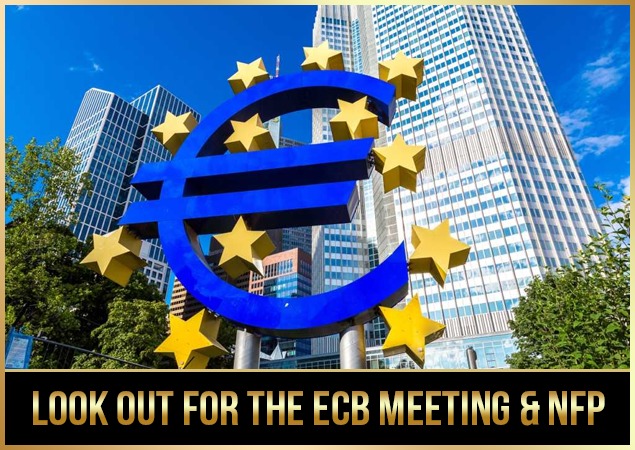
LOOK OUT FOR THE ECB MEETING & NFP
The media has played up the upcoming ECB with all the Sturm und Drang that can be mustered. However, investors and other market participants seem considerably less anxious. And for a good reason: at the end of the day, it does not really matter that much.
Despite oil prices rising more than a third this year, the ruble has risen a modest 2.25% against the dollar. The correlation (rolling 60-day) of the change in the ruble and the change in Brent oil price peaked a year ago near 0.66. It has been near 0.20 for the past 60 days.
Last but not least, in the week ahead, both the US and China report May CPI figures. US CPI is still accelerating, but the good news is the base effect peaked last month. In May 2020, the headline and core measures of US CPI fell by 0.1%. They are expected to be replaced in the 12-month measures by a 0.4% increase in both.
Here are the key market moving factors for the week:
The US
- Market participants are assessing comments by Treasury Secretary Janet Yellen, who showed her support for President Joe Biden’s $4 trillion spending plans even if inflation persists into next year. She also added that a “slightly higher” interest rate environment would be a “plus” for the US, reigniting fears about tapering Fed stimulus. As a result, the 10-year Treasury yield rebounded nearly 1% to 1.569%, reflecting reflation hopes.
- A mixed US non-farm payrolls report on Friday sent Treasury yields lower as the markets trimmed Fed tapering expectations. That pressured the US Dollar.
EUROPE
- The ECB meets on Thursday and will release its updated growth forecasts for 2021 and 2022.
- Policymakers will debate whether to prolong their support for the euro zone recovery through emergency stimulus, a decision that will hinge on how strong they believe the region’s economic recovery is.
- Recent dovish comments by several ECB policymakers have highlighted the risks of premature tightening. Any indication from ECB head Christine Lagarde that the debate on tapering is getting underway could push euro zone bond yields still higher and undermine the economic recovery in the bloc.
The UK
- With the planned full reopening of the UK economy on June 21 looking increasingly doubtful investors will be paying close attention to Friday’s figures on monthly GDP growth.
- While the reopening of shops and the hospitality sector in April is unsurprisingly expected to have contributed to another solid monthly increase in growth, the recovery is likely to face its first real test over coming weeks as concerns surrounding the new ‘delta’ Covid-19 variant (first detected in India) grow.
JAPAN
- Japan will highlight the need for fiscal reform even as it keeps up stimulus to combat the blow from the coronavirus pandemic, a draft of its economic and fiscal blueprint reviewed by Reuters showed.
- The government will also unveil plans to promote green and digital investment by drawing in private demand, as part of efforts to revitalise the world’s third largest economy, according to the draft of this year’s blueprint.
- “The government will seek to promptly return Japan’s economy to pre-pandemic levels with a determination to never again push the country back to deflation,” the draft showed.
AUSTRALIA
- The services sector in Australia continues to expand in May, and at a slightly faster pace, the latest survey from the Australian Industry Group revealed on Monday with a seasonally adjusted Performance of Services Index score of 61.2.
- That’s up from 61.0 in April, and it moves further above the boom-or-bust line of 50 that separates expansion from contraction.
- This was the highest monthly result in the Australian PSI® since October 2003.
CHINA
- China’s consumer inflation bottomed at the end of the last year, but deflationary pressures were still evident in January and February when CPI was still below zero year-over-year.
- Even though on a month-over-month basis, China’s CPI fell by 0.5% and 0.3% in March and April, respectively, the year-over-year pace accelerated from -0.2% in February to 0.9% in April.
- Prices are expected to have accelerated to a 1.6% year-over-year pace in May. That would be the highest since last September.
Market Overview:
Gold
- Gold prices pulled back slightly during Monday’s Asia-Pacific trade after rising over 1% on Friday.
Oil
- Oil pulled back after hitting fresh multi-year highs on Monday, as investors awaited the outcome of this week’s talks between Iran and world powers over a nuclear deal that is expected to boost crude supplies.
- Brent crude futures for August fell 38 cents, or 0.5%, to $71.51 a barrel by 0519 GMT, after earlier hitting $72.27, their highest since May 2019. U.S. West Texas Intermediate crude for July touched $70 for the first time since October 2018 but reversed course to be at $69.32 a barrel, down 30 cents, or 0.4%.
Below are the major market moving events for the week:
Based on the above factors and the events lined up for the week, the analyst at RvR Ventures suggests you to Trade responsibly; invest only as much as you can lose. All the profits and losses due to the above data are your own personal responsibility. Kindly practice money management & risk mitigation while trading.
Chat with us to know more: https://wa.me/971581958582
Register to open your account: http://bit.ly/OpenFxAccount
Join Our Telegram Channel: https://t.me/ForexFundManagers
Subscribe to Our YouTube Channel: https://youtu.be/AnTlQd-FQxc
